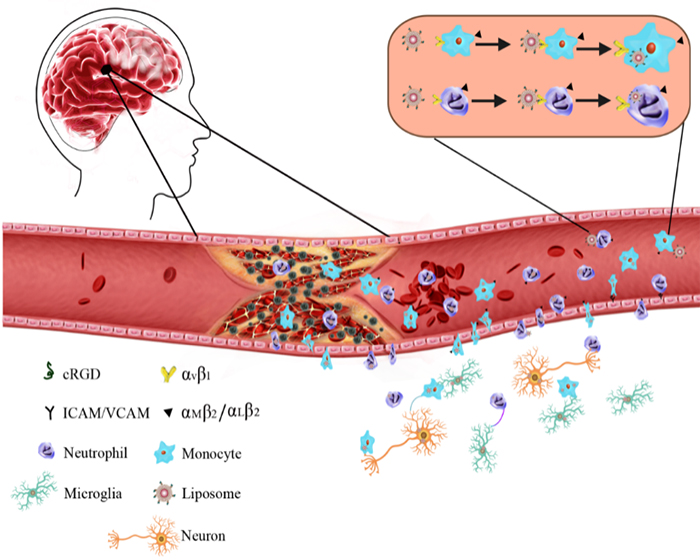
A novel liposome-leukocytes combination delivery system was designed for ischemic stroke target therapy. The study was published on “Science Advances”, with Prof. Jianxin Wang and associate Prof. Jing Qin as co-responding authors.

Stroke is the first cause of death in China, with 80% being ischemic stroke. Standard treatment for acute CI is the administration of thrombolytic drugs that break down the blood clots to restore the blood supply. However, the therapeutic window of such treatment is limited and within only 3-4.5 hours of symptom onset. Furthermore, less than 3.0% of all patients with ischemic stroke receive thrombolytic therapy due to various reasons. Once the “time window” is missed, such treatment is no longer recommended because of potential safety issues.
The inflammatory response after CI involves the recruitment of leukocytes (mainly monocytes and neutrophils) to the stroke core and penumbra. This delayed process occurs in the infarcted hemisphere from 30 min to at least 1 week after stroke onset in both human and animals. Secondary inflammation offers a unique therapeutic opportunity by extending the “time window” after CI to enable the effective delivery of therapeutic molecules to ischemic sub-regions and targeted cells in the brain. Professor Qin was devoted to designing such liposome-cell combination carrier based on binding effect of RGD peptide with leukocytes for many years. The present study focused on the cyclic RGD modified liposomes which can bind with leukocytes in vivo. The cRGD-liposomes, carried by leukocytes, could enter the ischemic core and penumbra. Then the liposome-cell system delivered therapeutic molecules to target neuron and microglia though bridge, exosome and membrane fusion, happened between leukocytes and targeted cells. Compared with traditional nanoparticles, the drug concentration in cRGD liposome group was enhanced by 3-4 folds in the ischemic hemisphere, resulting a reduction in infarct size. Such an administration method from center to outside gives a promising prospect for cerebral ischemia therapy.